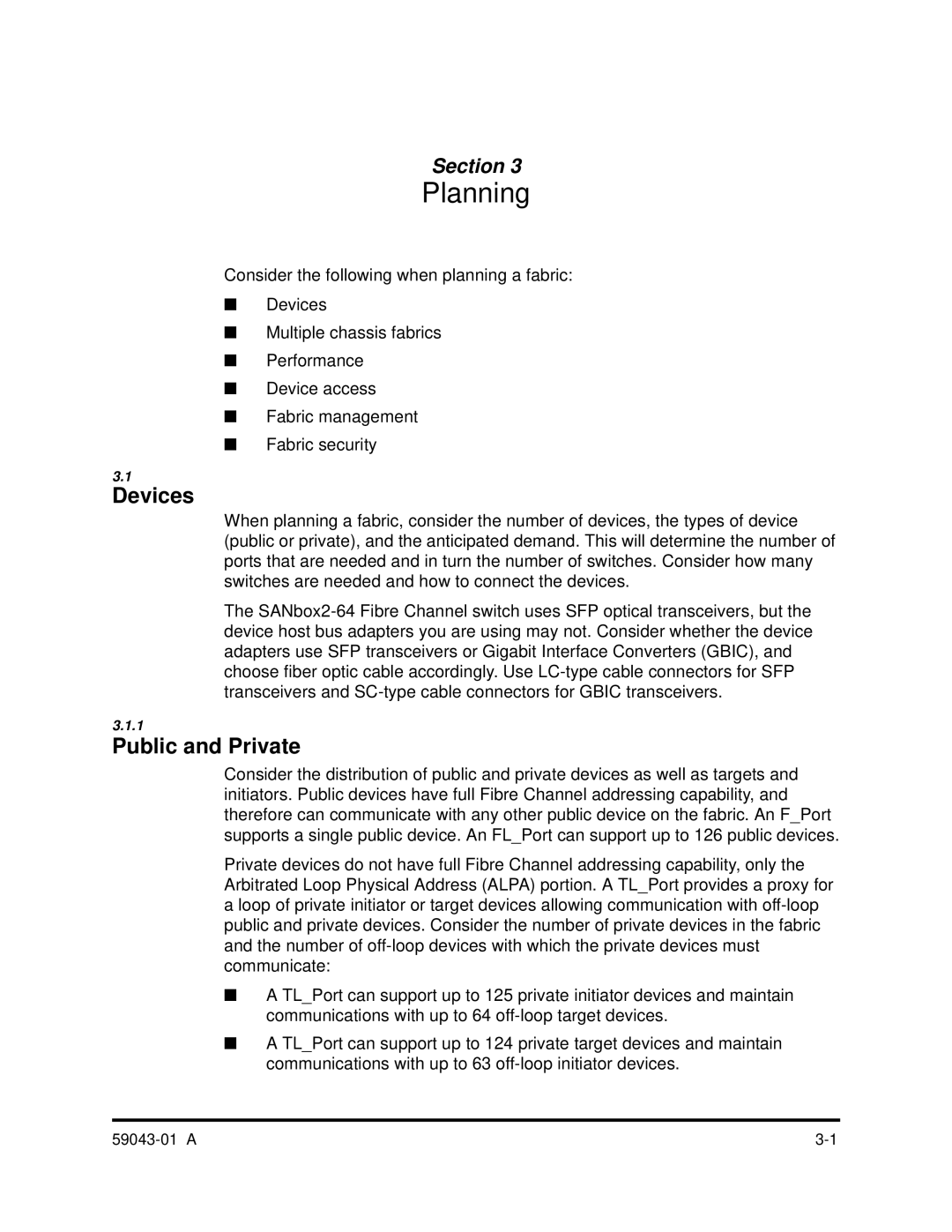Section 3
Planning
Consider the following when planning a fabric:
■Devices
■Multiple chassis fabrics
■Performance
■Device access
■Fabric management
■Fabric security
3.1
Devices
When planning a fabric, consider the number of devices, the types of device (public or private), and the anticipated demand. This will determine the number of ports that are needed and in turn the number of switches. Consider how many switches are needed and how to connect the devices.
The
3.1.1
Public and Private
Consider the distribution of public and private devices as well as targets and initiators. Public devices have full Fibre Channel addressing capability, and therefore can communicate with any other public device on the fabric. An F_Port supports a single public device. An FL_Port can support up to 126 public devices.
Private devices do not have full Fibre Channel addressing capability, only the Arbitrated Loop Physical Address (ALPA) portion. A TL_Port provides a proxy for a loop of private initiator or target devices allowing communication with
■A TL_Port can support up to 125 private initiator devices and maintain communications with up to 64
■A TL_Port can support up to 124 private target devices and maintain communications with up to 63
